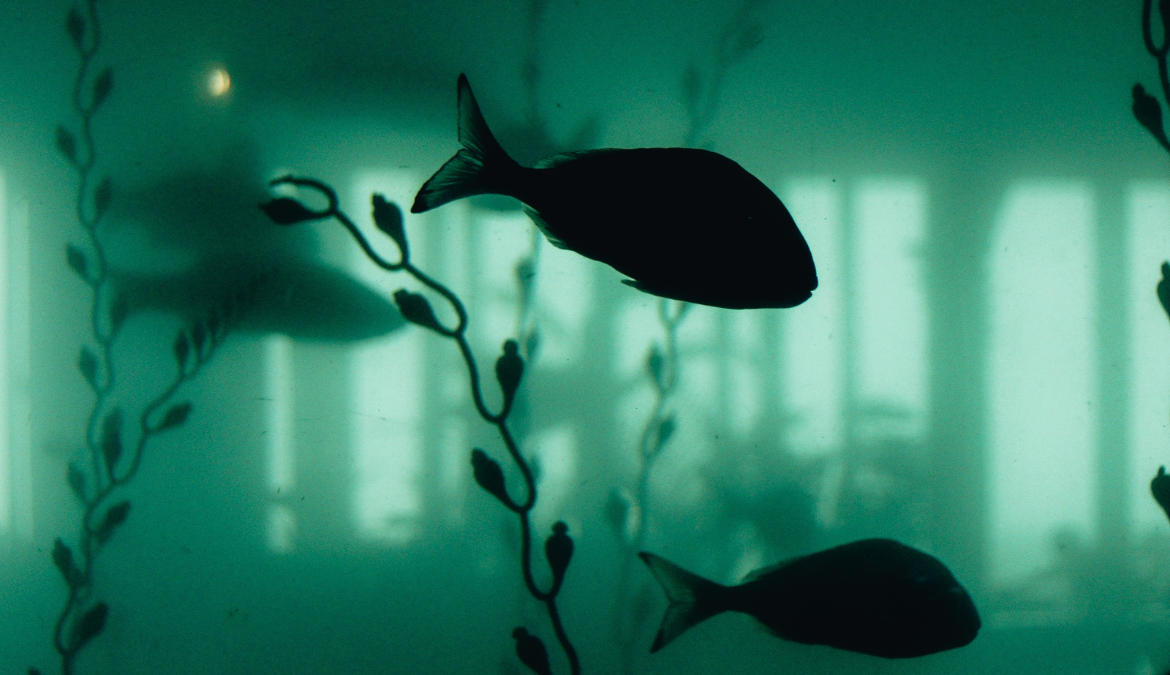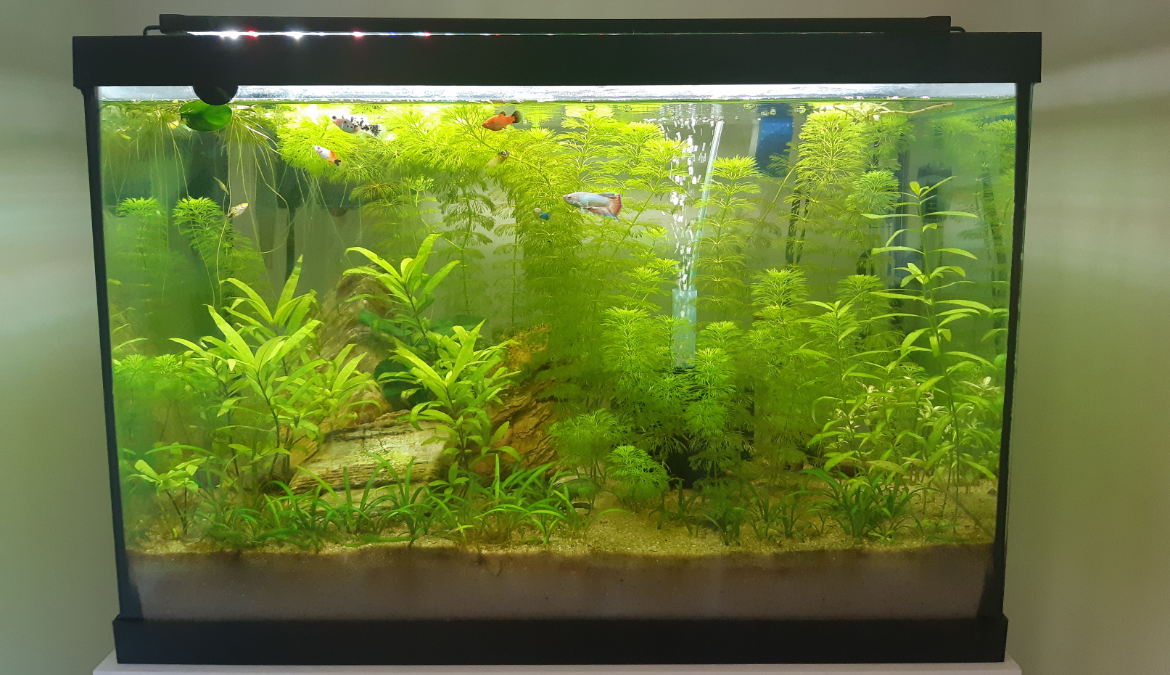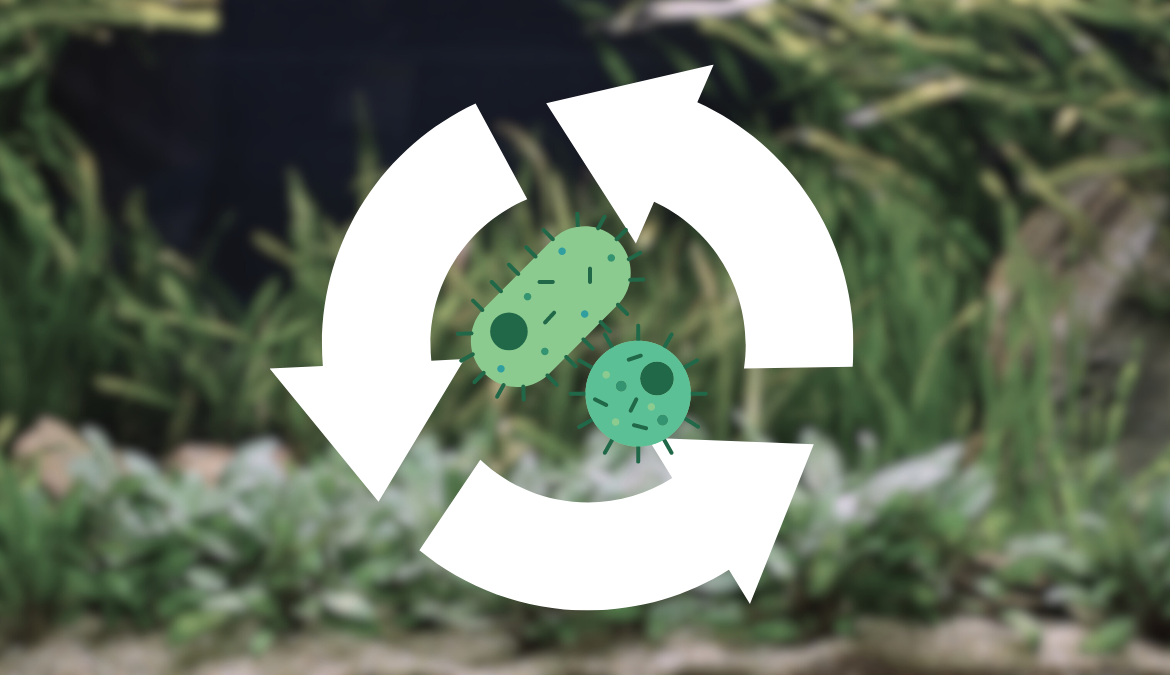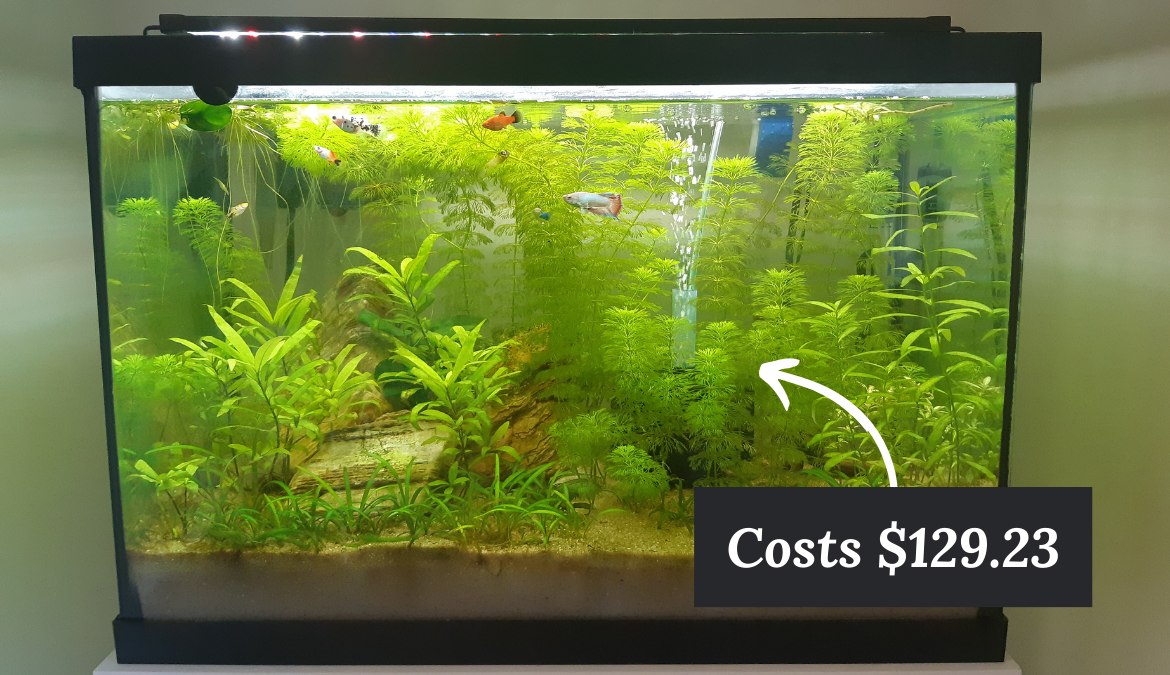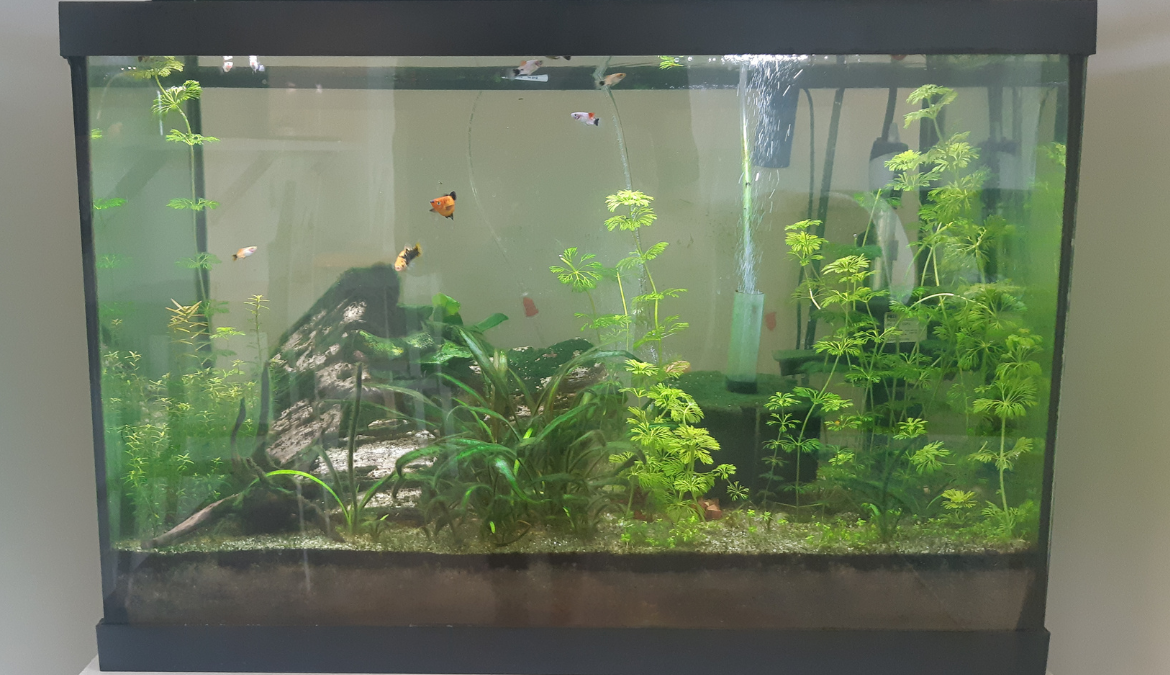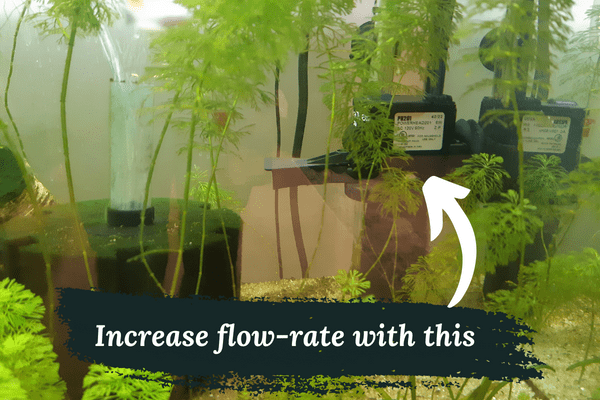It can be difficult to find plants that will thrive in low-tech aquariums where there is less light and limited CO2. Finding easily grown plants will make your tank look a lot nicer and will make your fishkeeping experience a lot more fun.
Here is our list of the most reliable low-tech plants that any fishkeeper can grow.
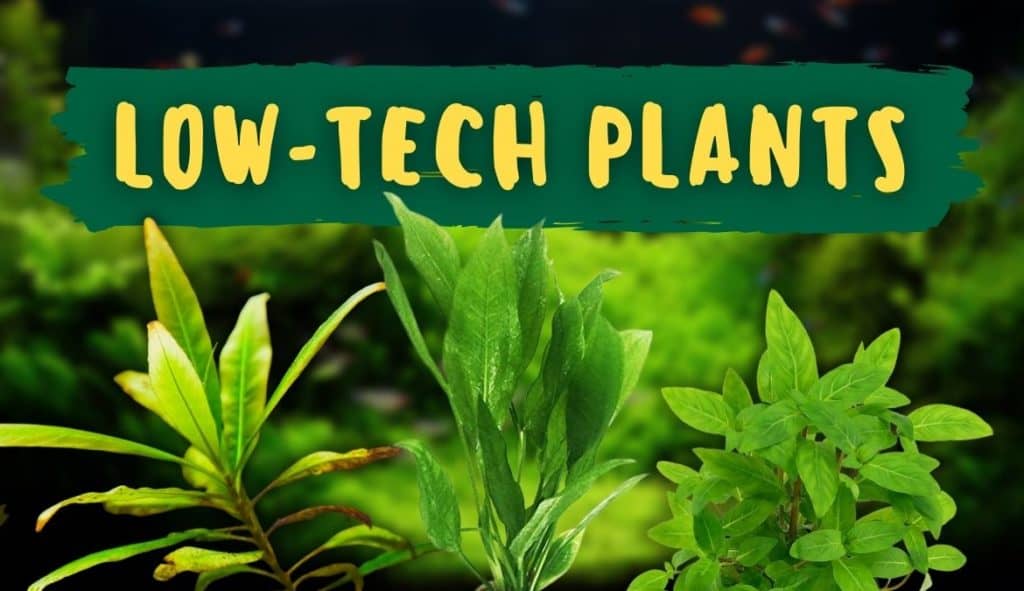
Contents
Hyrgophila polysperma
Hygrophila polysperma is one of our favorite low-tech aquarium plants because of its beautiful long narrow leaves that grow in pairs up the stem.
In our experience, this plant is one of the least demanding plants, which makes it an excellent option for beginners and low-tech tanks. It has grown exceptionally well in our 10-gallon tank, which has 8.2 pH and inert Seachem Flourite.
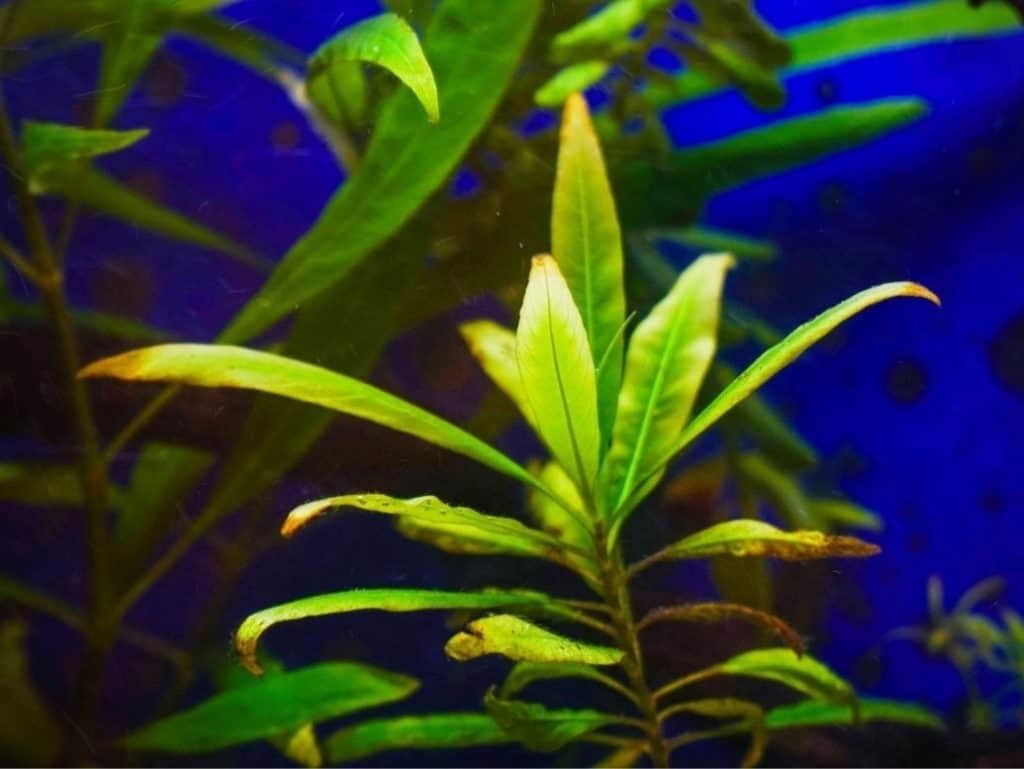
Meaning, our tank does not offer optimal conditions for aquatic plants to be grown, but H. polysperma finds a way to thrive anyways.
| Plant species | Hygrophila polysperma |
| pH | 5.0-8.2 |
| Temperature | 65-86°F (18-30°C) |
| Water hardness | 30-250ppm (2-14 dGH) |
| Fertilization | All-in-one liquid fertilizer |
Propogating hygrophila polysperma
H. polysperma will shoot out roots and grow new plants on its own. But you can also cut the stem between leaf pairs and plant the stem into your substrate.
It’s best if you plant a stem that already has roots growing off of it.
Hygrophila polysperma is an invasive species
The hygrophila variety of plant species are commonly referred to “swam weeds” because of how quickly they grow. There are more than 80 hygrophila varieties, of which polysperma is one of them.
Hygrophila polysperma is actually illegal to sell or buy in some US states because it’s considered a noxious weed. In the 1950s it was first used into the aquarium hobby, but invaded local ecosystems after it was introduced into local waterways.
Cyrptocoryne species
Cryptocoryne are a hardy, undemanding aquatic plant species that grow well in low-CO2 conditions.
You can buy them in a bunch of different varieties, with each variety having its own unique look and style.
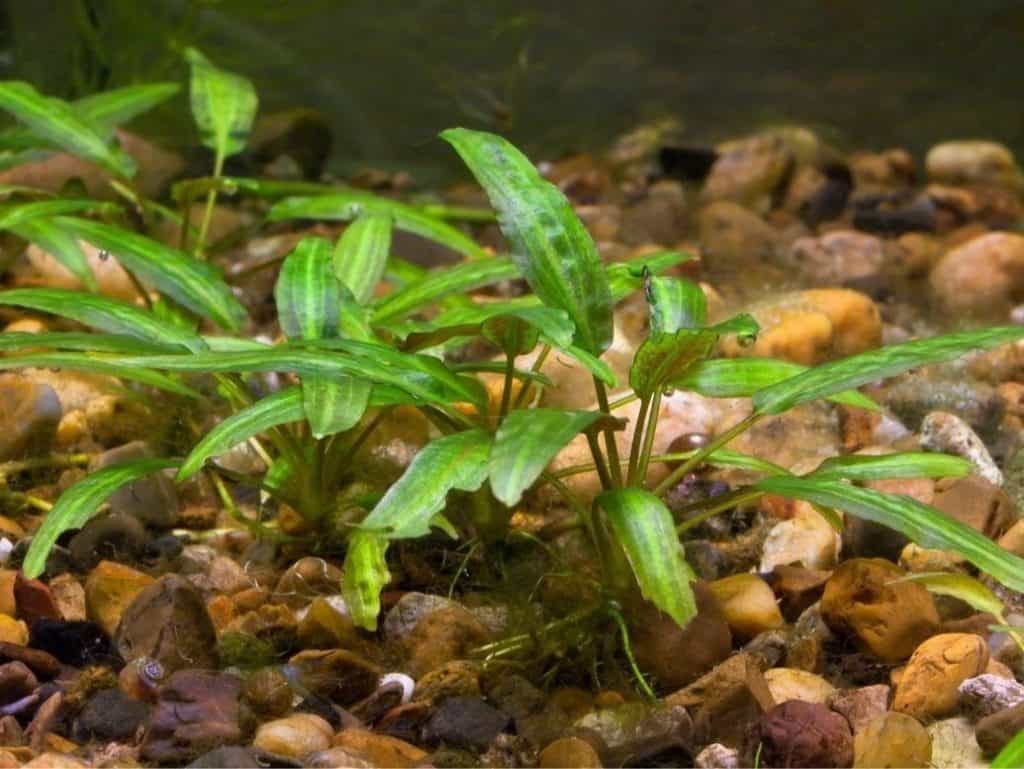
The thing about crypts is that they are heavy root-feeders. Meaning, they absorb most of their nutrients from their robust root system. This means it’s beneficial to use a nutrient-rich aqua soil, dirt or root tab fertilization.
| Plant species | Cryptocoryne species |
| pH | 6.0-8.2 |
| Temperature | 72-82°F (22-28°C) |
| Water hardness | 100-250ppm (6-14 dGH) |
| Fertilization | Root tab fertilization, active substrate, soil/dirt |
Staurogyne repens
Staurogyne repens are one of our favorite carpeting plants for low-tech tanks. They grow in short, bushy-like shapes with short, broad leaves.
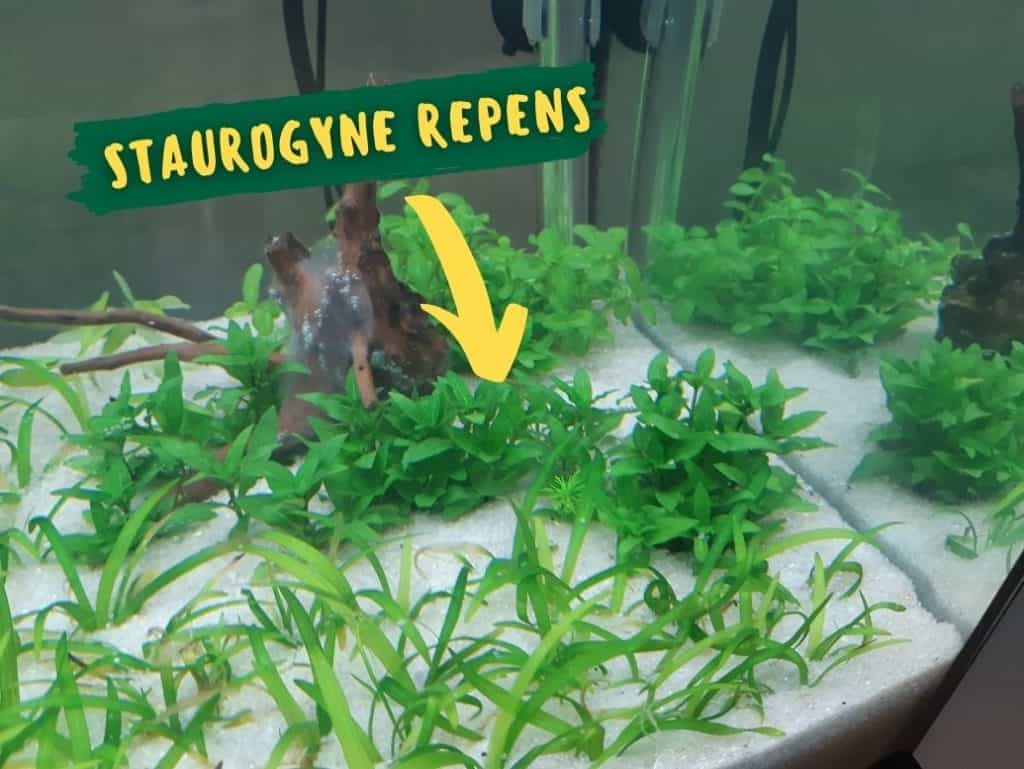
S. repens tend to grow more vertically when in low-light tanks. And more horizontally in high-light.
Therefore, if you want to achieve a carpeting effect in your low-tech tank, you will likely need to trim and propagate these plants as they grow. If not, you might not have a carpet effect, but you will still have a beautiful plant.
| Plant species | Staurogyne repens |
| pH | 6.0-8.2 |
| Temperature | 68-86°F (20-30°C) |
| Water hardness | 50-250ppm (3-14 dGH) |
| Fertilization | Root tab fertilization, active substrate, soil |
Bacopa caroliniana
Bacopa caroliniana is a beautiful stem plants that has a nice herbal fragrance. It grows circular leaves up its stems that are thick and spongey.
These plants do require good water column fertilization and some light. But they will still grow effectively in low-tech aquariums.
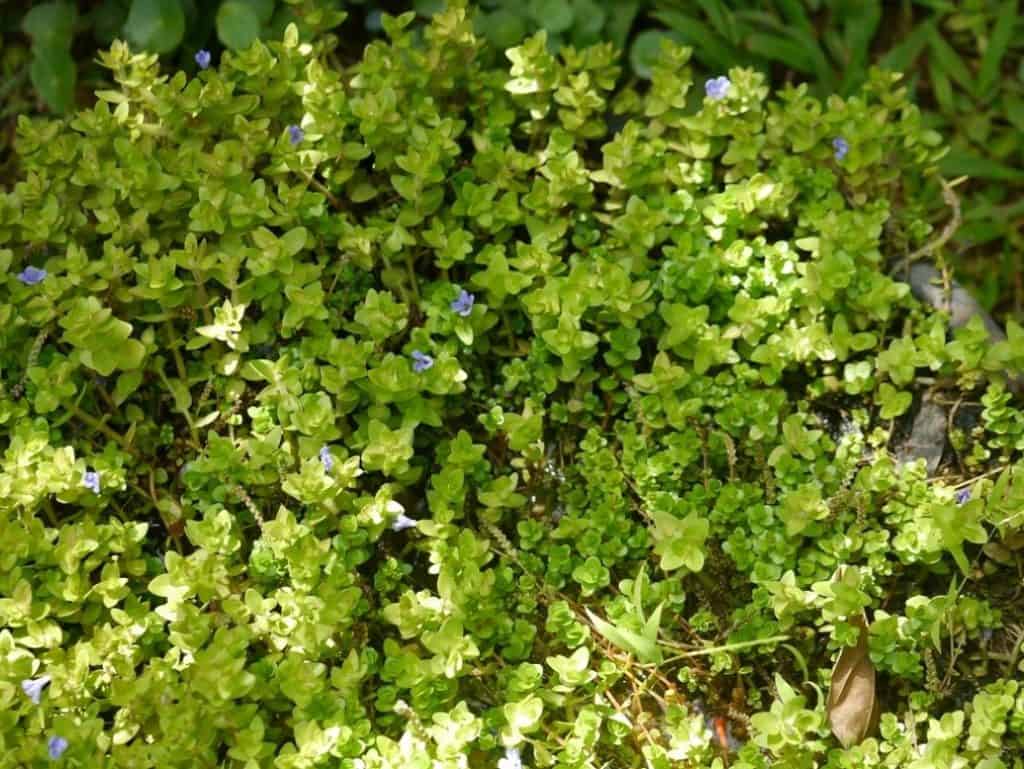
Bacopa caroliniana works as a fantastic background plant as they will grow to the surface of your tank and even bud flowers as they emerge ot the top of your tank.
| Plant species | Bacopa caroliniana |
| pH | 6.0-8.2 |
| Temperature | 68-82°F (20-28°C) |
| Water hardness | 70-180ppm (4-10 dGH) |
| Fertilization | All-in-one liquid fertilizers |
Dwarf sagittaria
Dwarf sagittaria is another great low-tech carpeting plant that loos great in jungle aquascapes. The plant shoots runners across the substrate and will populate your tank floor.
The grass-like leaves will grow to 2-3 inches long and will provide long of substrate cover for fry.
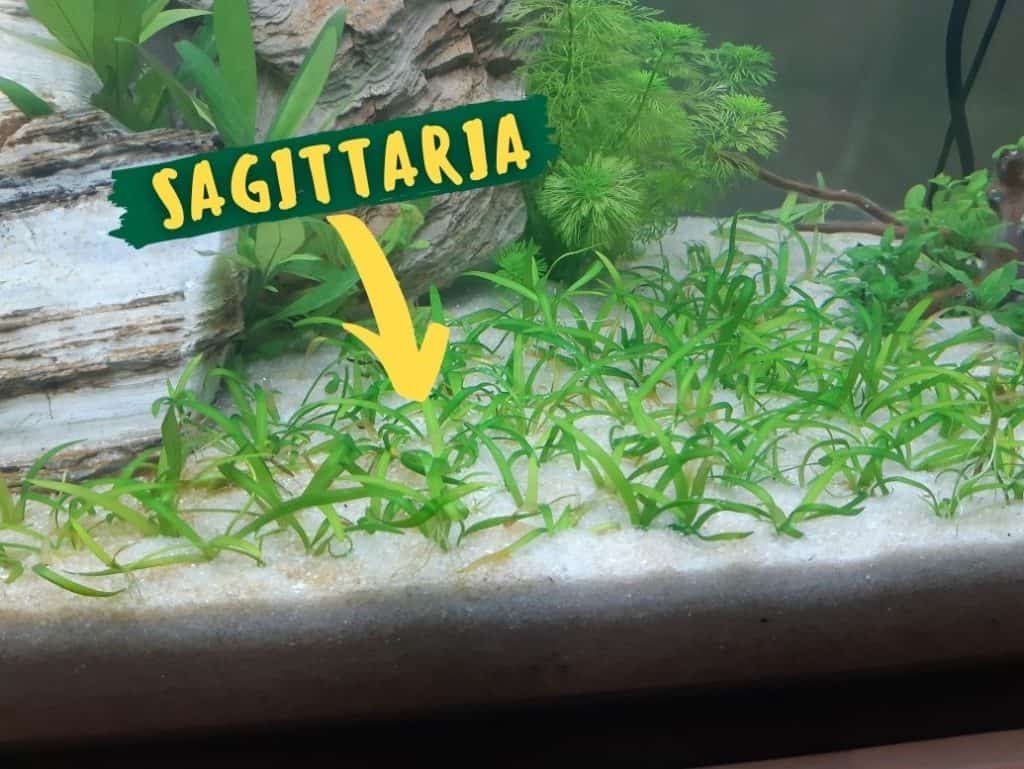
Best of all, it’s very undemanding and will grow well in most low-tech tanks.
| Plant species | Dwarf sagattaria |
| pH | 6.0-8.2 |
| Temperature | 68-82°F (20-28°C) |
| Water hardness | 50-250ppm (3-14 dGH) |
| Fertilization | Root tab fertilization, active substrate, soil/dirt |
Anubias species
Anubias are a great choice for freshwater fishkeepers who don’t have aqua soil or dirt substrate. This is because anubias are epiphyte plants.
This means they do not grow roots in substrate. Instead, they attach themselves to other plants or surfaces, such as rocks or driftwood.
This means they do not require root tabs or active substrate. They can survive in a range of water parameters and will be suitable for most low-tech tanks.
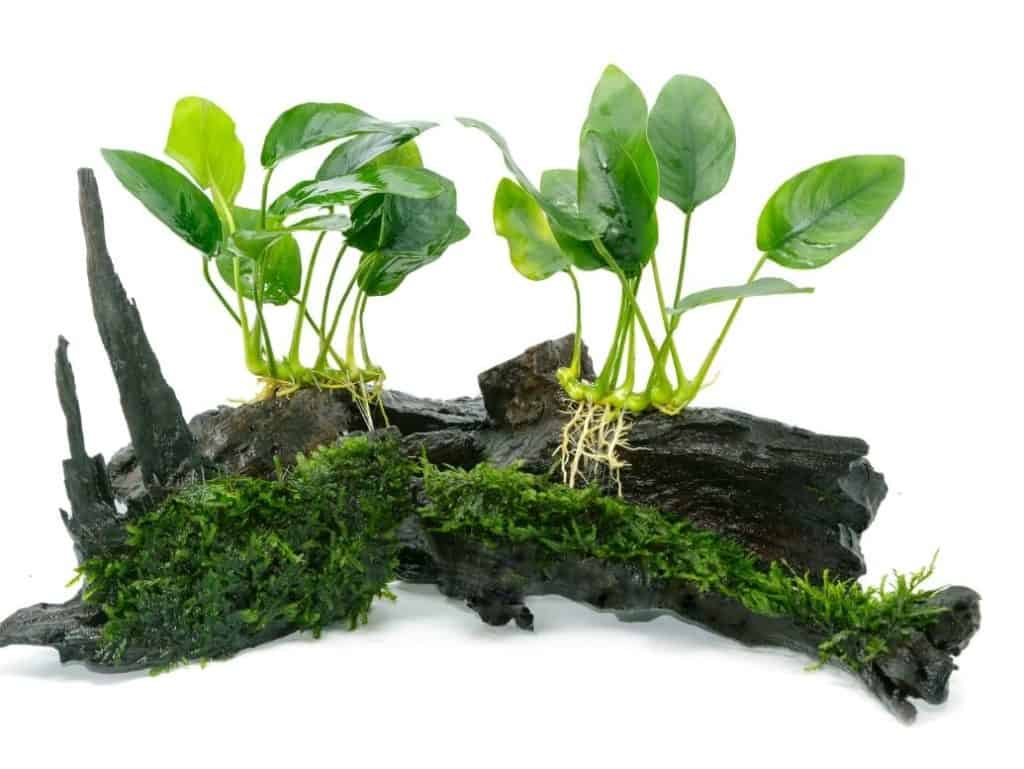
| Plant species | Anubias species |
| pH | 6.5-7.8 |
| Temperature | 72-78°F (22-26°C) |
| Water hardness | 30-250ppm (2-14 dGH) |
| Fertilization | Liquid all-in-one fertilizer |
Java fern
Java fern are another epiphyte plant that does not require substrate. Just like anubias plants, java fern are best if they are wedged or tied to hardscape with filter floss.
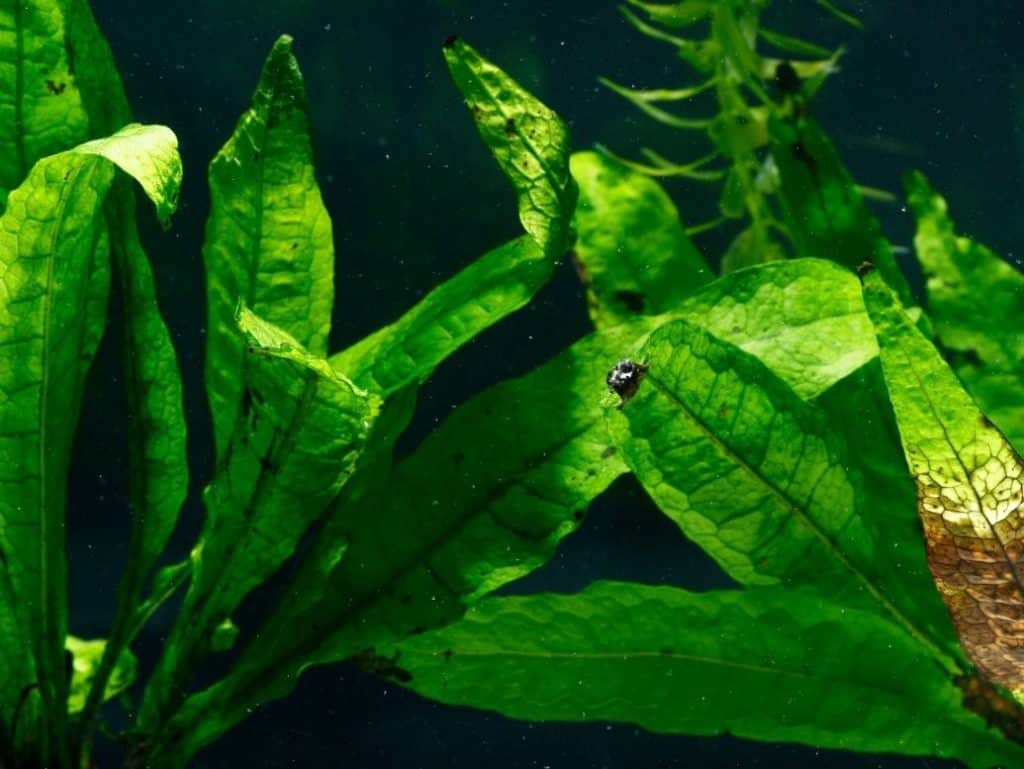
They are a little more sensitive to water conditions than some of the plants on this list. However, you can likely still grow java fern successfully even if your water source falls a little outside of the ranges provided.
| Plant species | Java fern |
| pH | 6.0-7.5 |
| Temperature | 68-82°F (20-28°C) |
| Water hardness | 50-140ppm (3-8 dGH) |
| Fertilization | Liquid all-in-one fertilizer |
Rotala rotundafolia
Rotala rotundafolia is a beautiful background stem plant that grows tall and with needle-like leaves. In our opinion, rotala is capable of being one of the more impressive-looking plants in your tank if grown successfully.
It is often suggested that stem plants obtain more of their nutrients from the water column than the substrate. However, we have had some difficulties successfully growing rotala in inert substrate.
Since adding it to our dirt substrate 20-gallon tank, the rotala has started growing impressively well and quickly. We would recommend using an active substrate with this plant.
In high-light tanks, rotala rotundafolia can transform into a beautiful red color. But it will usually remain green in low-light environments.
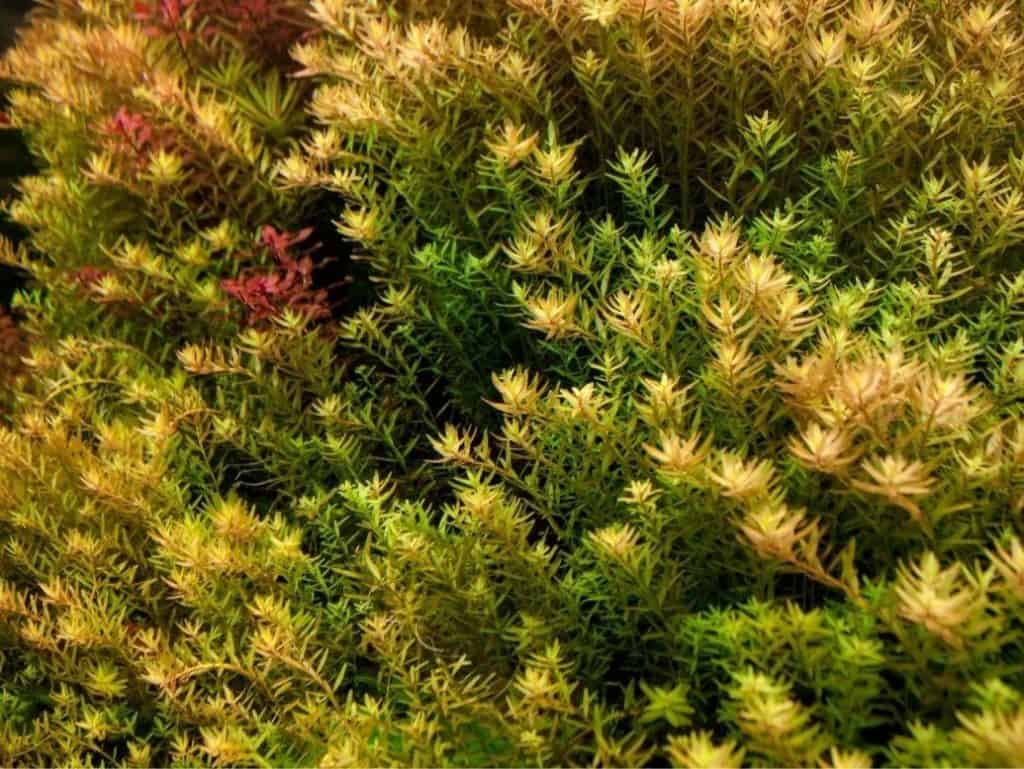
| Plant species | Rotala rotundafolia |
| pH | 6.0-8.2 |
| Temperature | 68-82°F (20-28°C) |
| Water hardness | 70-110ppm (4-6 dGH) |
| Fertilization | Liquid all-in-one fertilizer |
Vallisneria species
Vallisneria is possibly the easiest aquarium plant to keep. It grows quickly without CO2, with very little light, in a very broad range of water parameters, with any type of fertilizer.
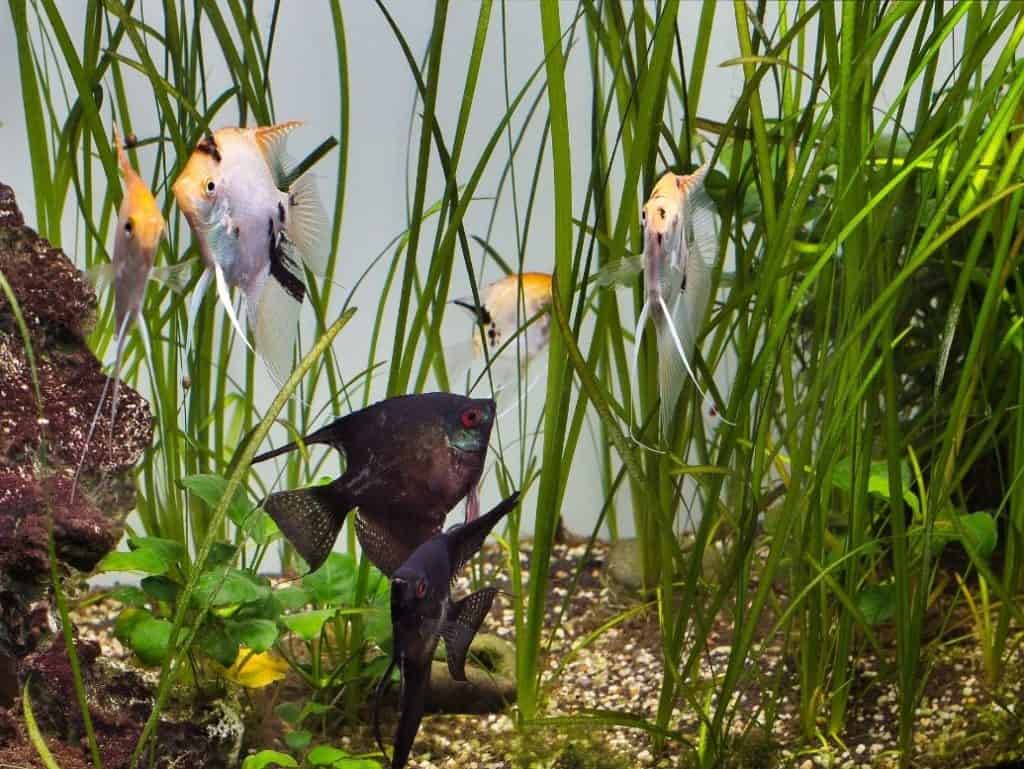
It’s more difficult to unsuccessfully keep this plant species, making it an excellent low-tech and beginner plant. We find that it’s excellent for messier, jungle-looking aquascapes because of its long strands.
| Plant species | Vallisneria species |
| pH | 6.5-8.5 |
| Temperature | 63-82°F (17-28°C) |
| Water hardness | 70-260ppm (4-15 dGH) |
| Fertilization | Any method |
Moss species
Moss plants are incredibly easy to grow and are typically suitable for a wide rage of water parameters. Mosses are epiphyte plants just like java fern and anubias.
They can be easily attached to rocks and driftwood using aquarium floss or aquarium-safe super glue. Simply add a dot of glue to the moss and press against a piece of hardscape for 5-seconds and you’re good to go.
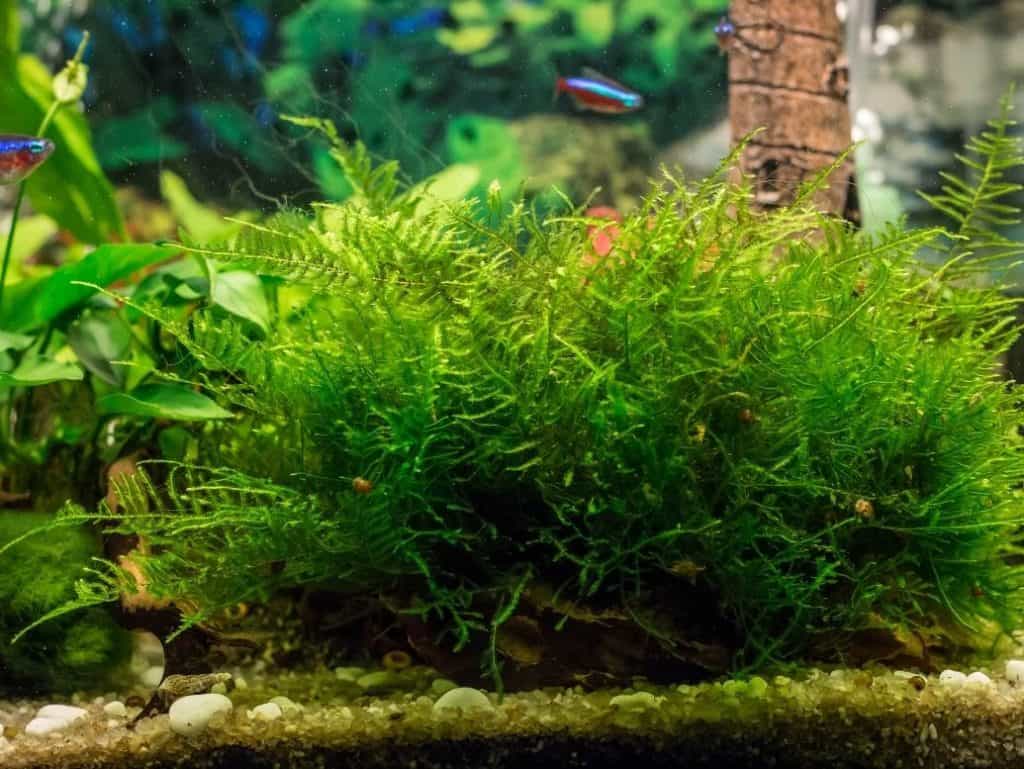
| Plant species | Moss species |
| pH | 5.5-8.0 |
| Temperature | 59-82°F (15-28°C) |
| Water hardness | 110-260ppm (6-15 dGH) |
| Fertilization | Liquid all-in-one fertilizer |
Floating plants
Floating plants are an obvious choice for low-tech planted tanks because they don’t require a special substrate, have access to atmospheric CO2, and receive higher concentrations of light.
This means they grow quickly.
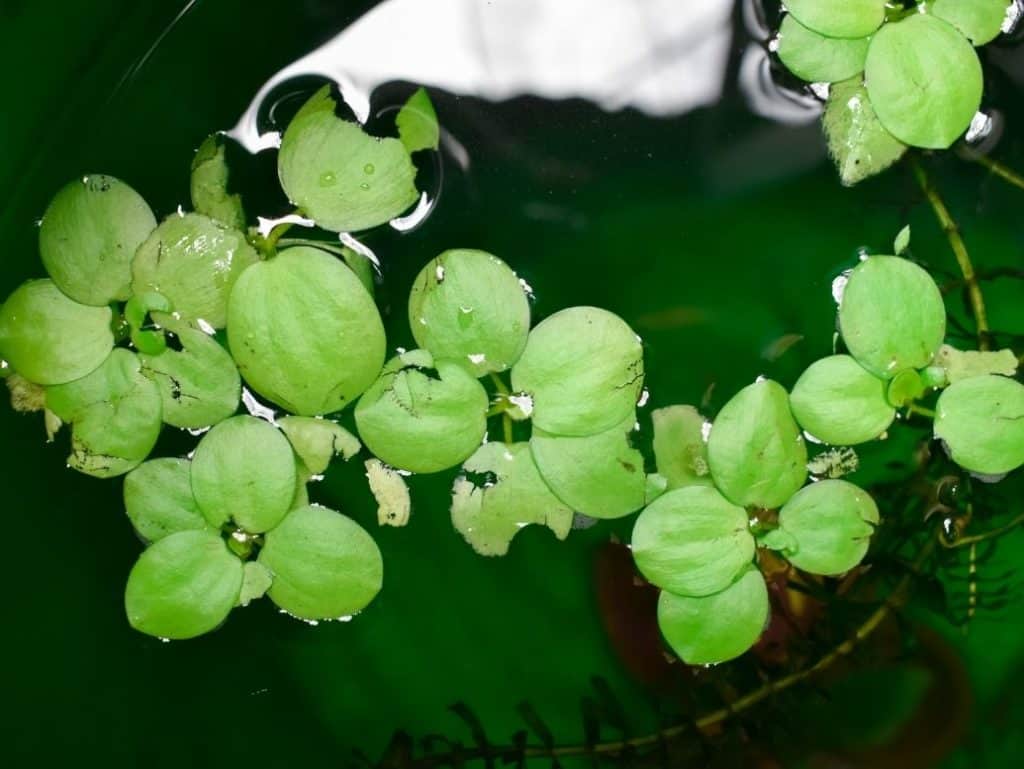
There are a variety of floating plants to choose from including duckweed, frogbit, water lettuce and red root floaters.
Many floating plants are considered invasive species due to how rampantly they will grow and affect local waterways. Many people have difficulty fully removing certain floating plant species such as duckweed because even the smallest piece will often reproduce and grow into a new plant.
They are regarded as excellent tools for absorbing excess ammonia and nitrite as well. All of these reasons make floating plants a great choice for low-tech aquariums.
| Plant species | Floating plants |
| pH | 6.0-8.2 |
| Temperature | 64-84°F (18-29°C) |
| Water hardness | 70-215ppm (4-12 dGH) |
| Fertilization | Liquid all-in-one fertilizer |


